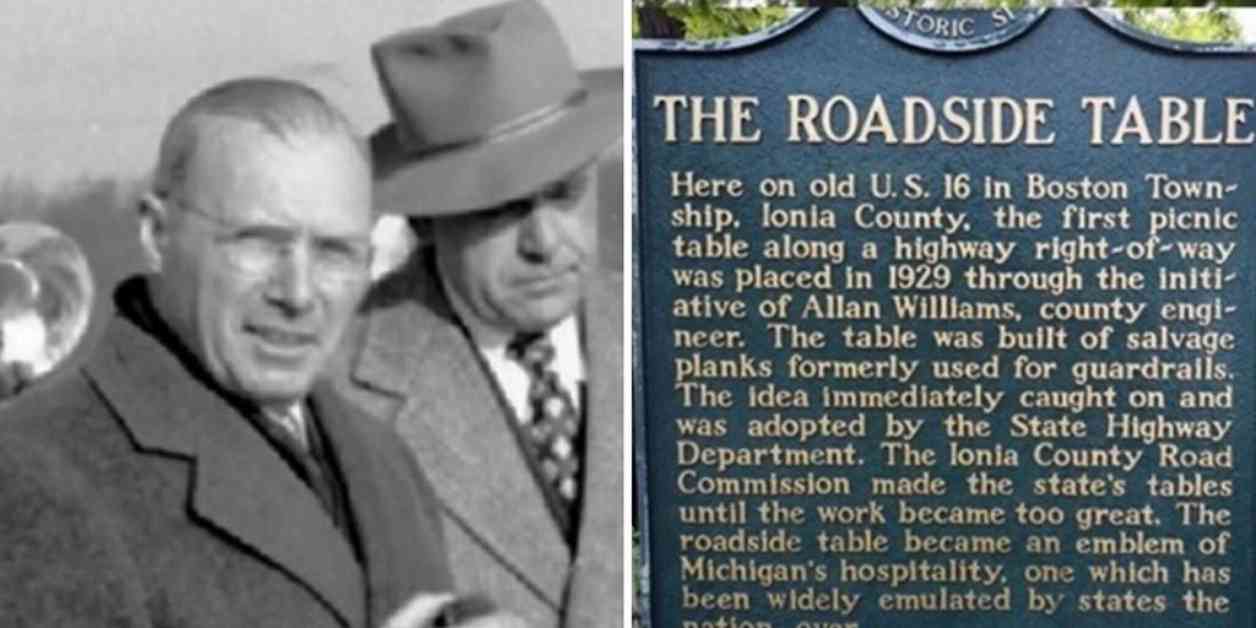Allan Williams, an American engineer, played a significant role in revolutionizing highway rest areas in the United States. Born in Ludington, Michigan in 1892, Williams inherited his knack for fixing things from his father, who was an electrical engineer. After studying engineering at the University of Michigan and Kalamazoo College, Williams found his calling when he became the county engineer for the Ionia County Road Commission in 1919.
During the 1920s, the automobile industry was booming, and more cars were hitting the roads across America. Williams noticed the need for better facilities for travelers to rest and refresh themselves along highways. He came up with the idea of creating roadside picnic tables from scrap lumber and placed them along Route 16 in Michigan in 1929. This concept quickly gained popularity, and soon, nearly 1,500 picnic tables were placed around Michigan by 1937.
Williams’ innovative idea for highway rest areas spread rapidly, and his legacy is still felt today. His vision paved the way for the development of over 1,400 full-service highway rest areas along U.S. Interstate highways, providing travelers with convenient spots to take a break and enjoy a meal. Williams’ impact was not limited to Michigan; his work influenced highway systems worldwide.
In addition to his contributions to transportation engineering, Williams was also a civic leader in his community. He served as the president of the Ionia County Free Fair, helped engineer the Ionia County Airport, and was chairman of the county hospital board. During World War II, he oversaw efforts in Ionia County to convert scrap metal into munitions, demonstrating his commitment to serving his community in times of need.
Williams’ efforts were recognized when he received a Michigan Tourism Award in 1976 for his contributions to promoting tourism in the state. Despite some dispute over the origin story of highway rest areas, Williams’ role in revolutionizing roadside amenities cannot be understated. His work set a precedent that was emulated around the world, highlighting the impact of a small-town engineer on the nation’s highway infrastructure.




